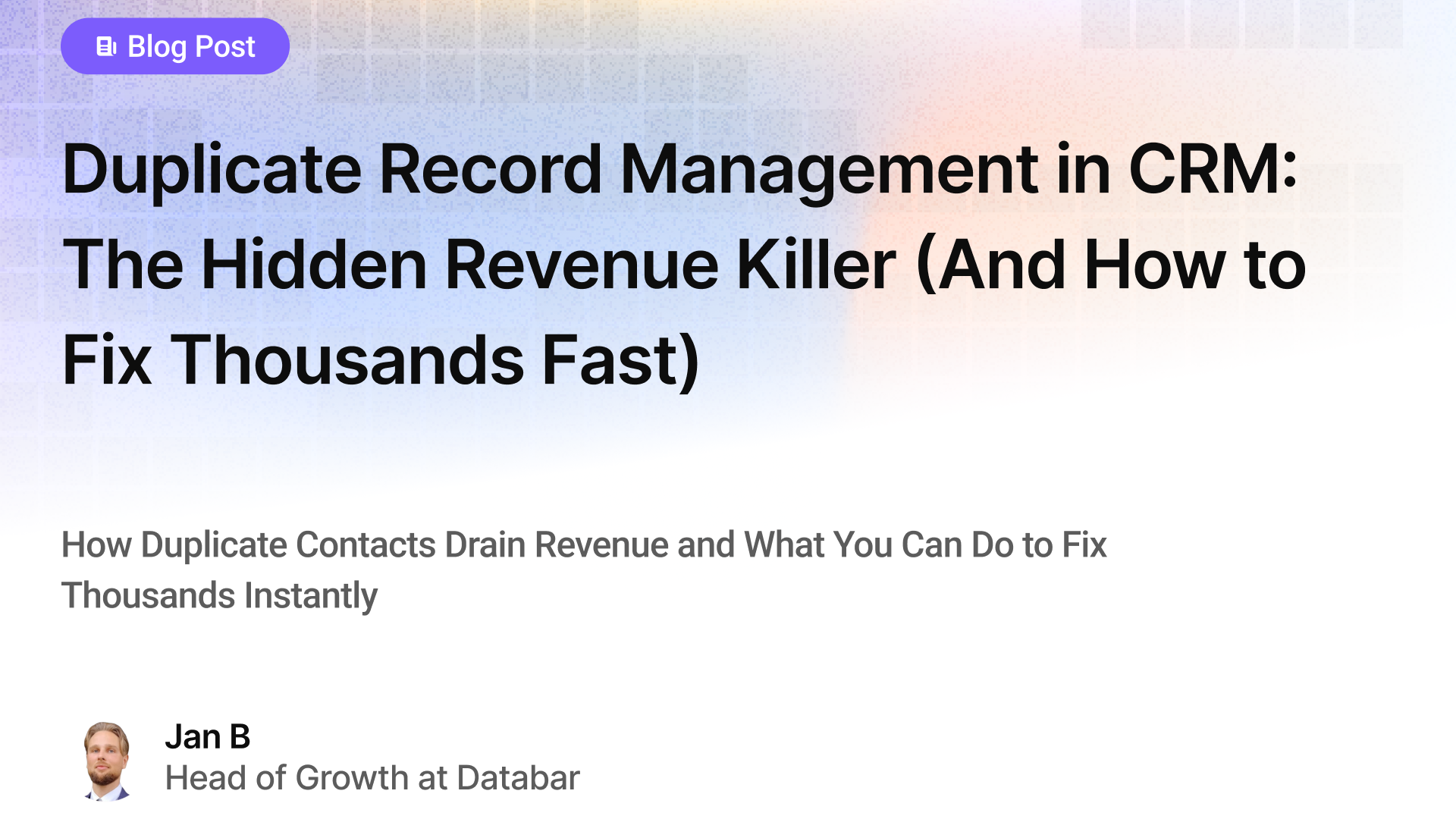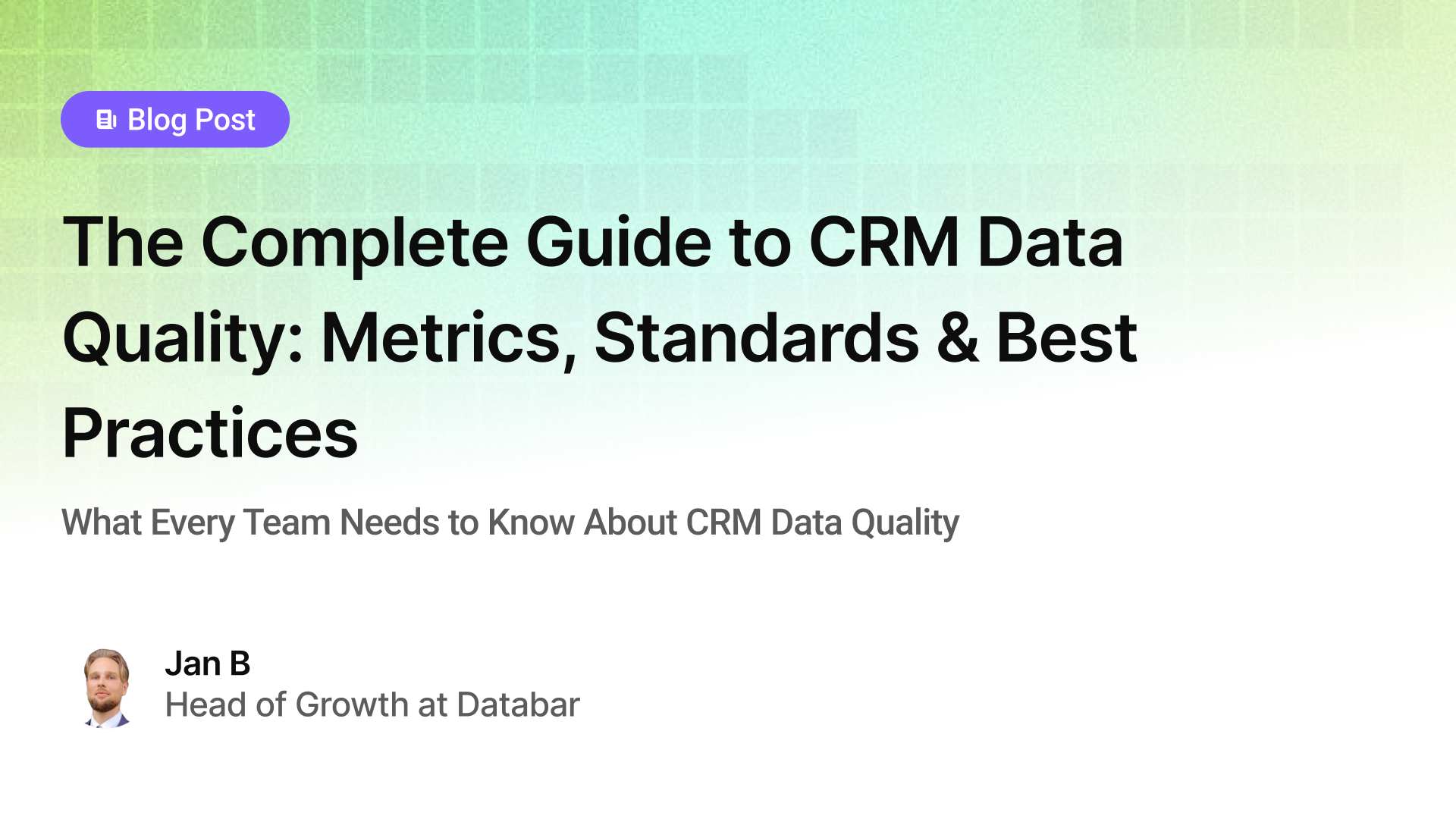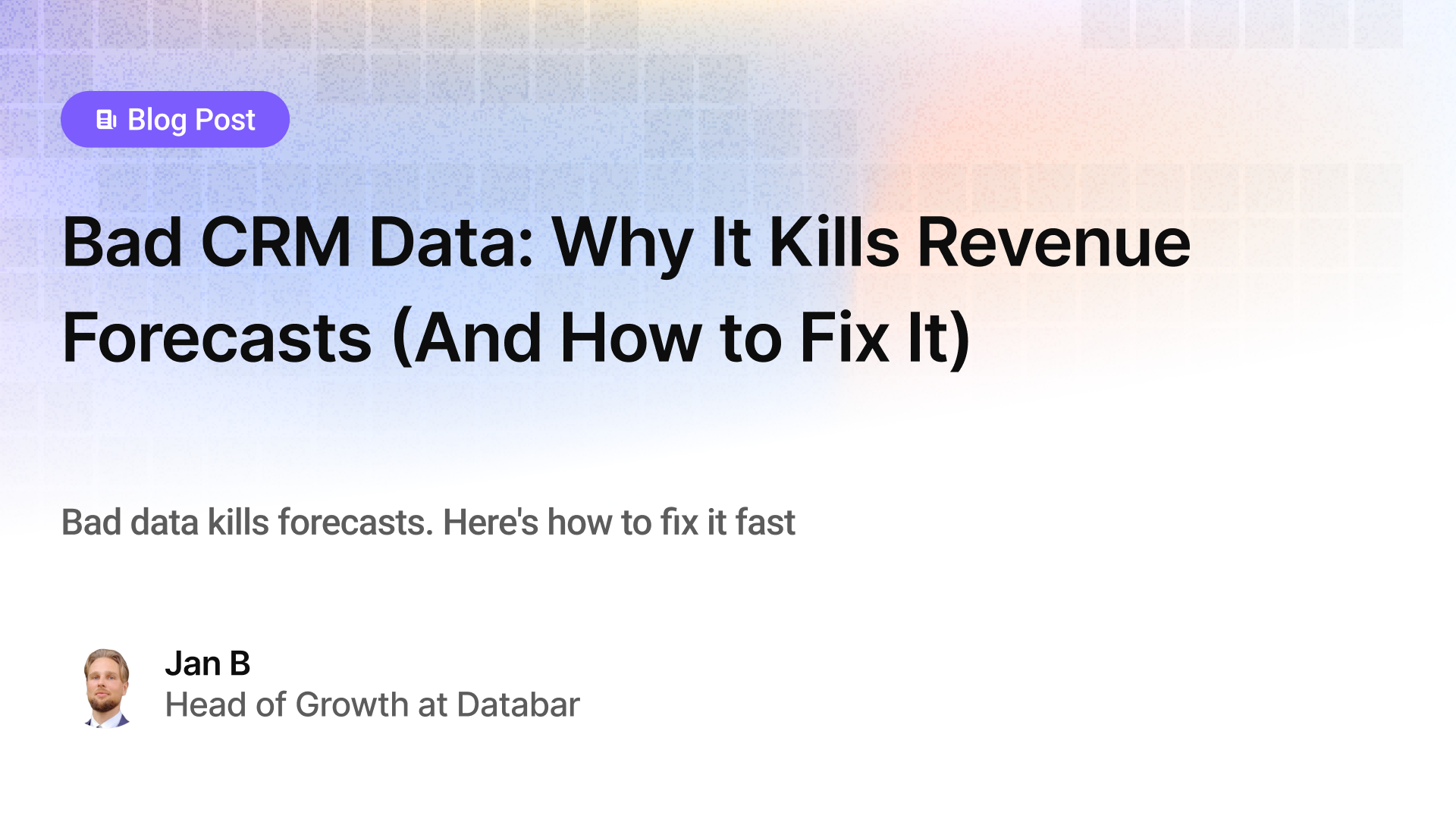B2B Data: Databar's Complete Guide
Everything you need to know about B2B Data
Blogby CindySeptember 01, 2023

B2B data, or business-to-business data, is information about companies that can be used for a wide range of purposes, from sales and marketing to market research and analytics. In this post, we'll explore the different types of B2B data sources available, the benefits of using B2B data, and tips for sourcing high-quality data. With platforms like Databar making it easier than ever to access and work with B2B data, businesses of all sizes and industries can take advantage of the benefits of data-driven decision-making.
What exactly is B2B data?
B2B data refers to information about businesses that is collected, stored, and analyzed by other businesses. This data data can include firmographic data, such as industry, size, and location, as well as people data, such as contact information, job titles, and employment history. This data can then be leveragted by companies for sales and marketing campaigns, lead generation, market research, and competitive analysis. With the rise of data analytics and artificial intelligence, B2B data has become an increasingly valuable resource for businesses looking to drive growth and success.
Types of B2B Data
B2B data can be sourced from two main categories: internal data and third-party external data. Internal data is usually collected by the company itself, while third-party data is collected from providers.
Examples of Internal Data:
- CRM data: Customer relationship management (CRM) software is a common source of internal B2B data. It can contain information on customers, prospects, leads, and sales history, providing valuable insights into the company's sales and marketing performance.
- Website analytics: Website analytics can provide insights into user behavior, such as the pages they visit, the time they spend on the site, and the actions they take. This information can be used to improve website performance and optimize marketing strategies.
Examples of Third-Party External Data:
- Firmographic data: This type of data includes information on a company's size, industry, revenue, and other key characteristics. Third-party data providers can offer firmographic data that can be used to identify potential customers, partners, or suppliers.
-
Public records data: Public records data includes information from sources such as government databases, court records, and news articles. Third-party providers can offer public records data that can be used for due diligence, compliance, and risk assessment.
-
Social media data: Social media platforms like Twitter, Facebook, and LinkedIn can provide a wealth of B2B data, including user demographics, interests, and behavior.
Data Sources
Data sources are the starting point for any B2B data strategy. Without reliable and accurate data sources, it’s impossible to build a successful B2B marketing campaign. Here are some of the most common data sources used in B2B marketing:
-
Third-party data providers: These companies specialize in collecting and selling data to businesses. They typically gather information through a variety of sources, including public records, surveys, and online activity tracking. Databar, for example, can help businesses easily access and extract data from over 1,000 APIs, making it simple to gather third-party data.
-
Customer data platforms (CDPs): CDPs gather data from multiple sources, including website activity, customer interactions, and CRM data. This data is then used to create a unified customer profile that can be used for targeted marketing campaigns.
B2B Data Use Cases
B2B data has a wide range of use cases for companies in various industries. Here are some examples:
-
Lead Generation: B2B data can be used to identify and target potential customers based on firmographic and people data. By leveraging this data, businesses can build targeted lead lists and improve the effectiveness of their sales and marketing efforts.
-
Market Research: B2B data can be used to gain insights into a particular industry or market. This data can provide information on the size of the market, the key players, and the competitive landscape, which can help businesses make informed decisions.
-
Competitive Intelligence: B2B data can be used to gather information about competitors, including their products and services, pricing, and marketing strategies. This information can help businesses develop competitive strategies and stay ahead of the competition.
-
Sales Enablement: B2B data can be used to support sales teams by providing them with accurate and up-to-date information on potential customers. This data can help sales reps prioritize their efforts and increase their chances of closing deals.
Benefits of B2B Data
B2B data is a valuable resource for businesses in a wide range of industries. It provides insights into customer behavior, industry trends, and market opportunities. Here are some of the key benefits of B2B data broken down by specific business functions:
Benefits of B2B data for Marketers:
-
Better targeting: With access to B2B data, marketers can identify and target prospects based on their job titles, industries, and other key characteristics.
-
Improved segmentation: B2B data allows marketers to segment their audience based on factors like buying behavior and engagement with previous marketing campaigns, posts, and products.
-
Personalized messaging: With detailed B2B data, marketers can create highly personalized messaging that resonates with their target audience by targeting interests and behavior.
Benefits of B2B data for Recruiters:
-
Improved candidate targeting: B2B data can help recruiters identify and target candidates with the skills and experience they need.
-
More efficient recruiting: With access to B2B data, recruiters can streamline their recruiting processes and reduce time-to-hire by providing them with accurate and up-to-date information on potential candidates.
Benefits of B2B data for Investors:
-
Performance Tracking: By monitoring changes in key performance indicators such as revenue, profit margins, and customer retention rates, investors can make more informed decisions.
-
Risk Assessment: B2B data can also help investors assess the risks associated with potential investments which includes evaluating the financial health of companies, analyzing revenue streams and profit margins, and monitoring changes in market demand or competition.
-
Better portfolio management: B2B data allows investors to track the historic and currentperformance of their investments and make more informed decisions about their portfolios.
B2B data is an essential resource that can help businesses gain valuable insights into customer behavior, industry trends, and market opportunities. By leveraging this data, businesses can make informed decisions and drive growth in a variety of industries. So, whether you're just getting started with B2B data or looking to enhance your existing data strategies, consider integrating B2B data into your business strategy.
To help you get started, Databar provides an easy-to-use platform that enables you to work with APIs without any technical expertise or skills. All you need to do is select a data source, customize your request, and click run. With Databar, you can access over 1000 APIs and utilize them to enhance your B2B data strategy to take your business to the next level. Sign up on Databar here.
Related articles

Duplicate Record Management in CRM: The Hidden Revenue Killer (And How to Fix Thousands Fast)
How Duplicate Contacts Drain Revenue and What You Can Do to Fix Thousands Instantly
by Jan, January 04, 2026

The Complete Guide to CRM Data Quality: Metrics, Standards & Best Practices
What Every Team Needs to Know About CRM Data Quality
by Jan, January 03, 2026

Bad CRM Data: Why It Kills Revenue Forecasts (And How to Fix It)
Bad data kills forecasts. Here's how to fix it fast
by Jan, January 02, 2026

Lead Scoring & Account Segmentation: Why Most CRMs Get This Backward (And How to Fix It)
How to build a system that tells your team who to call, when, and why
by Jan, October 06, 2025